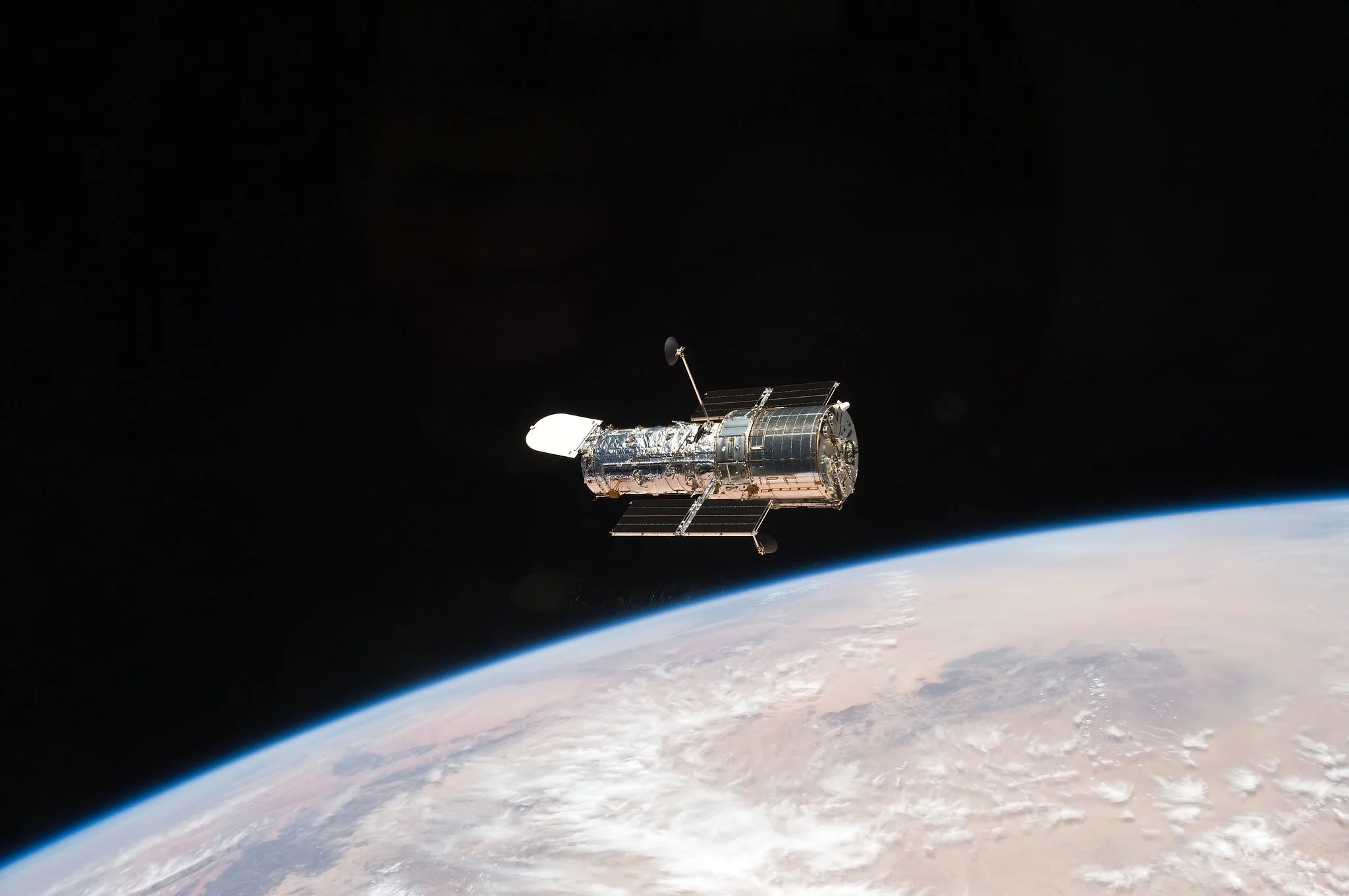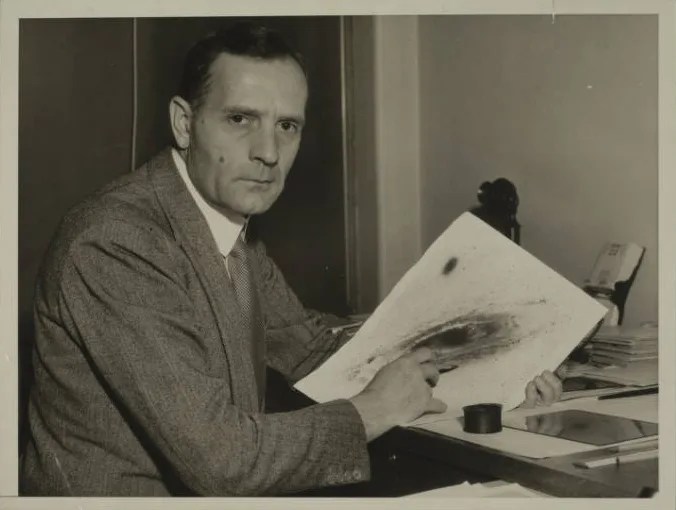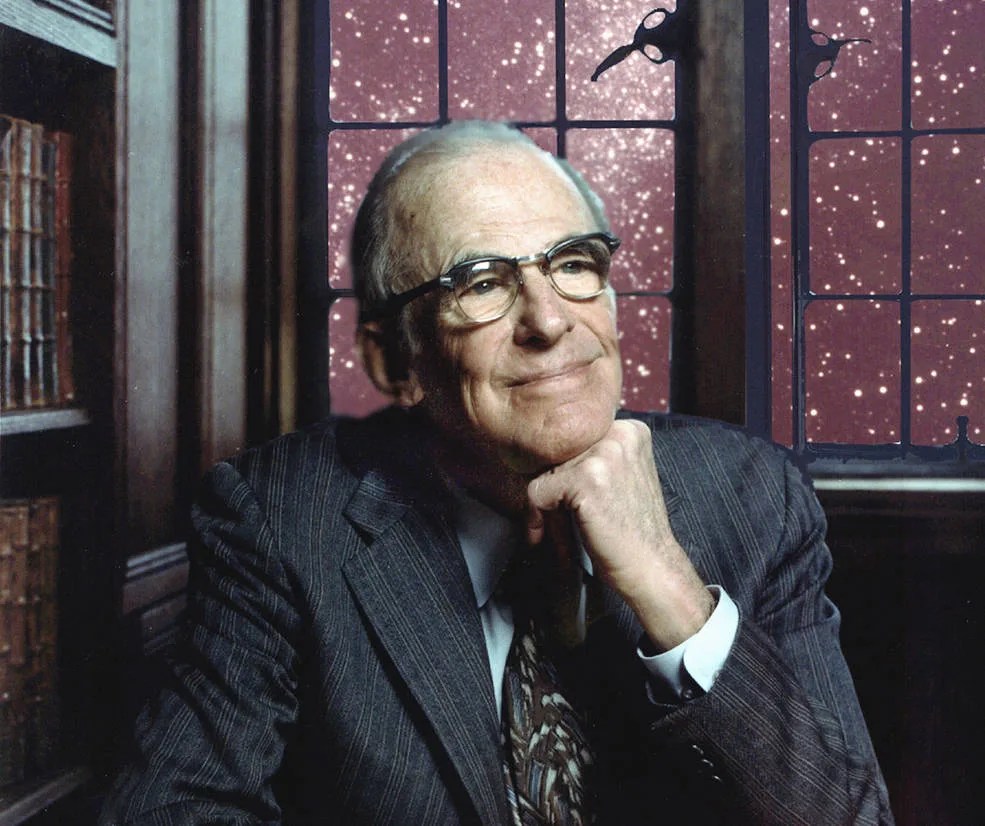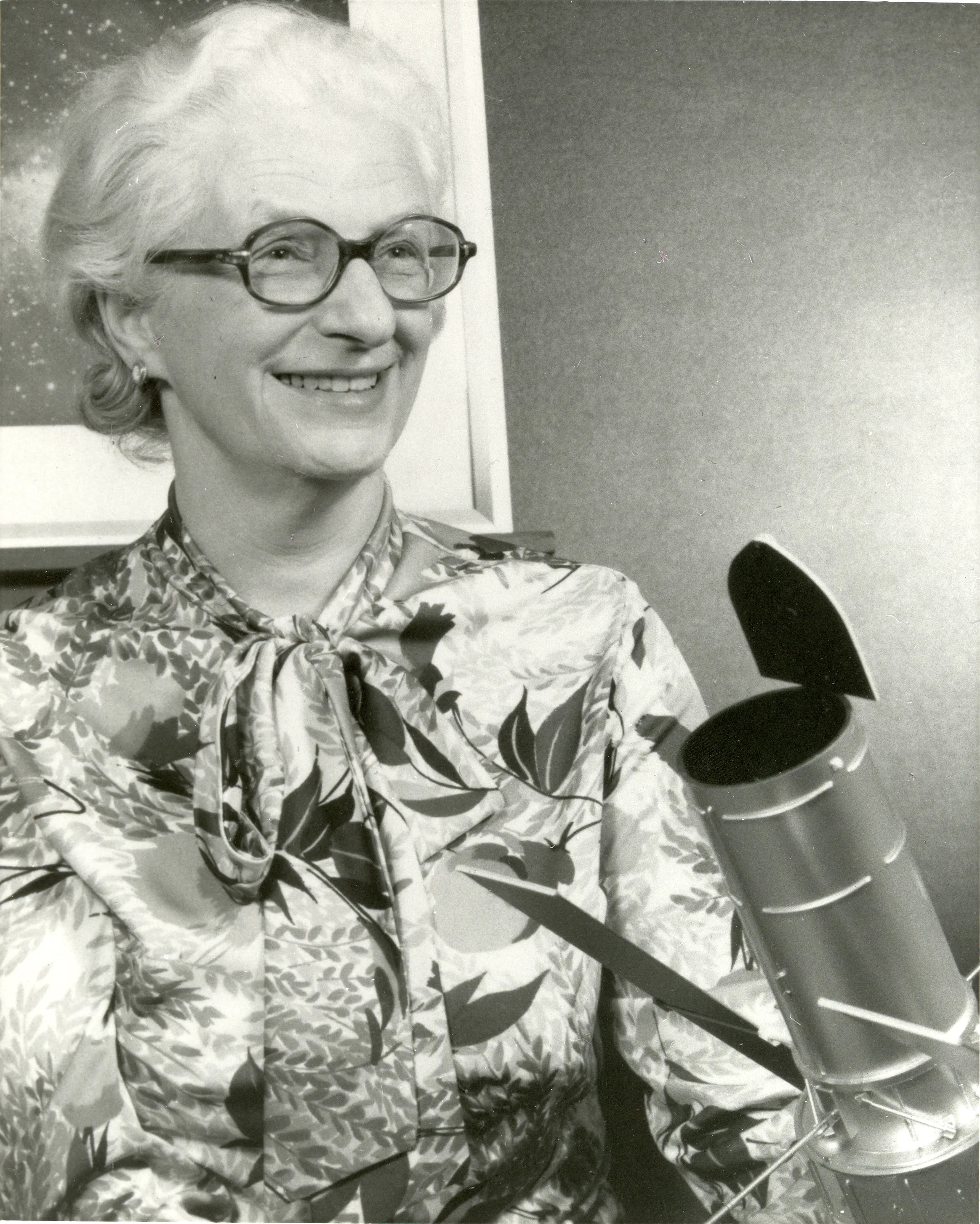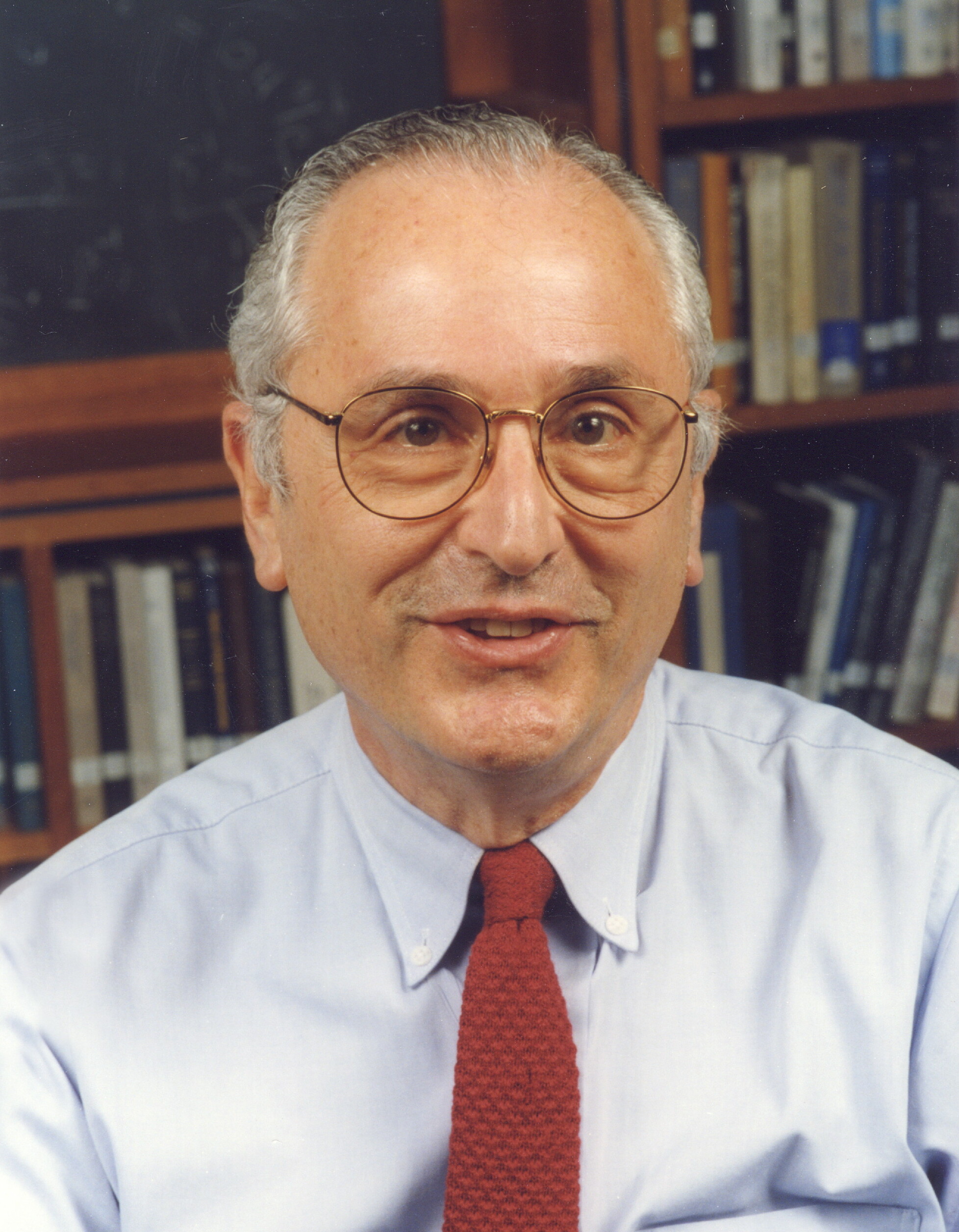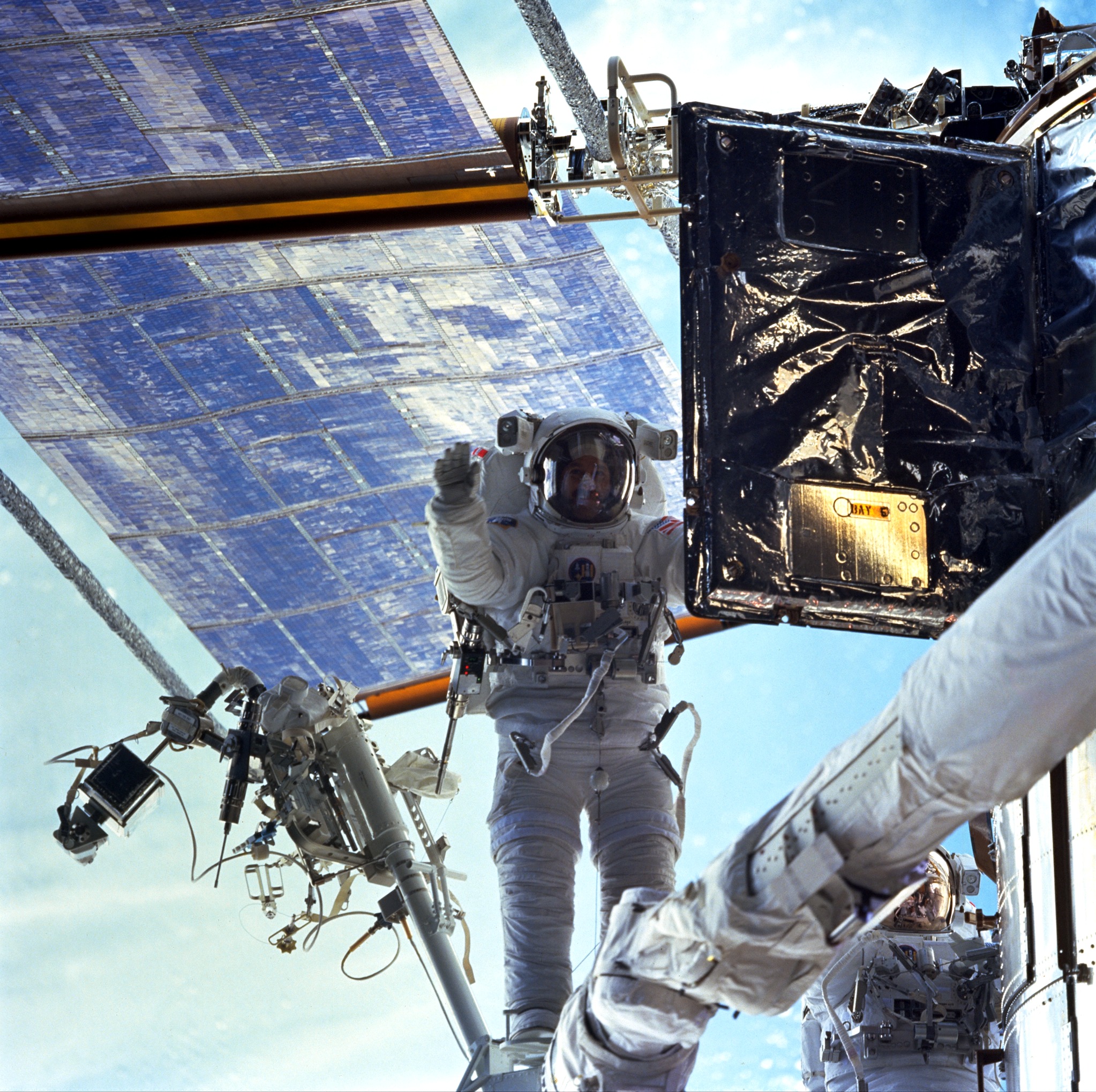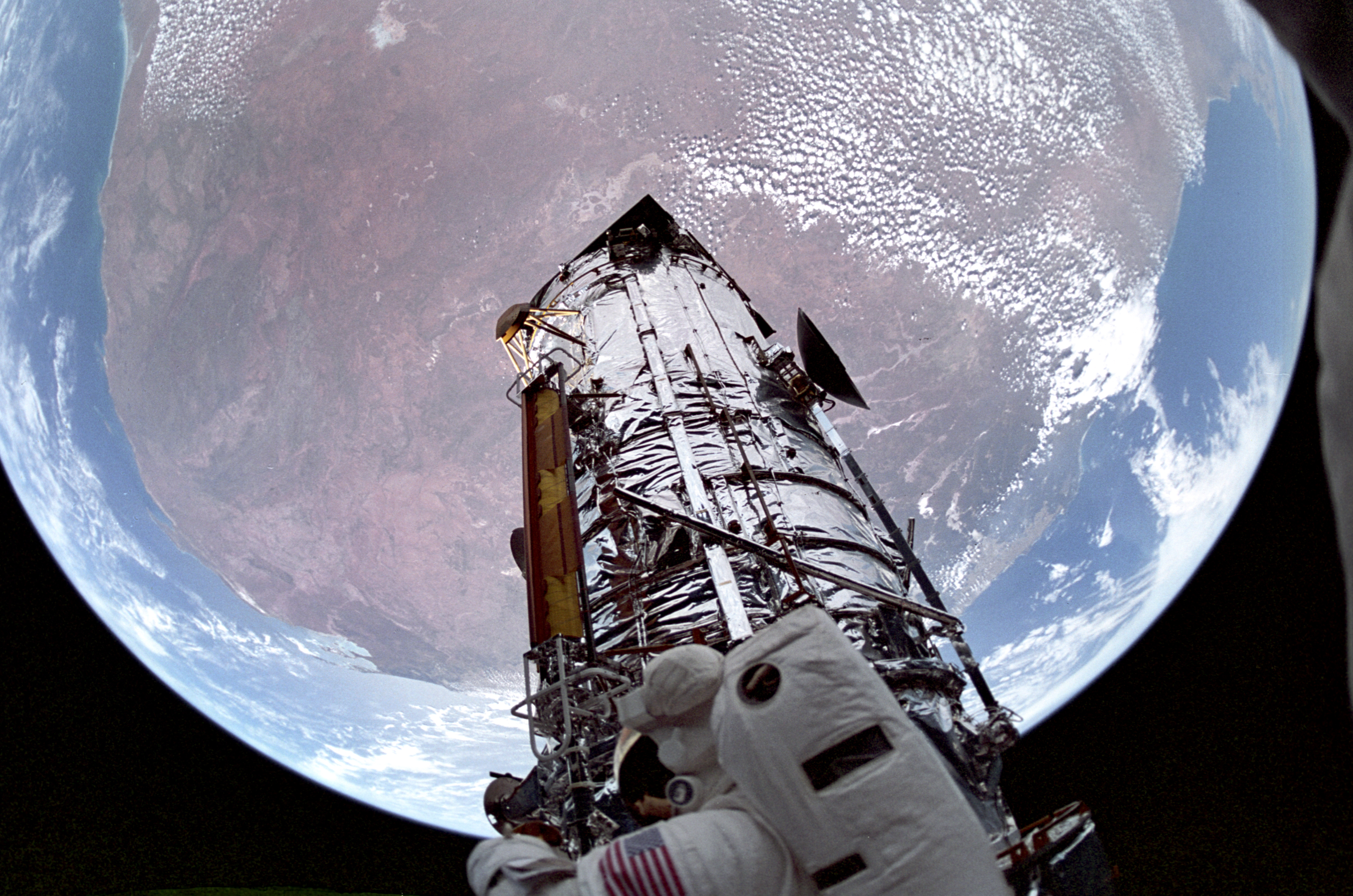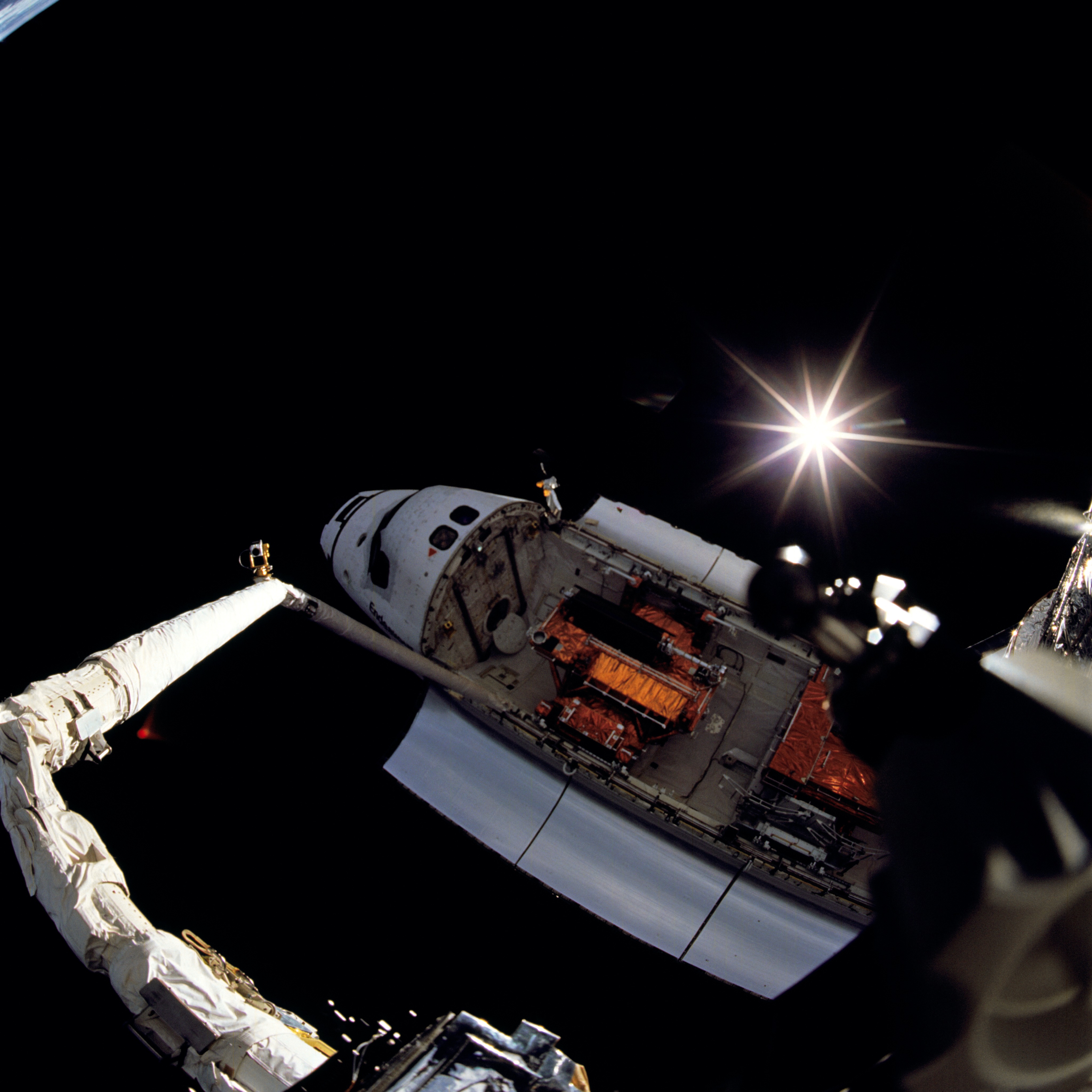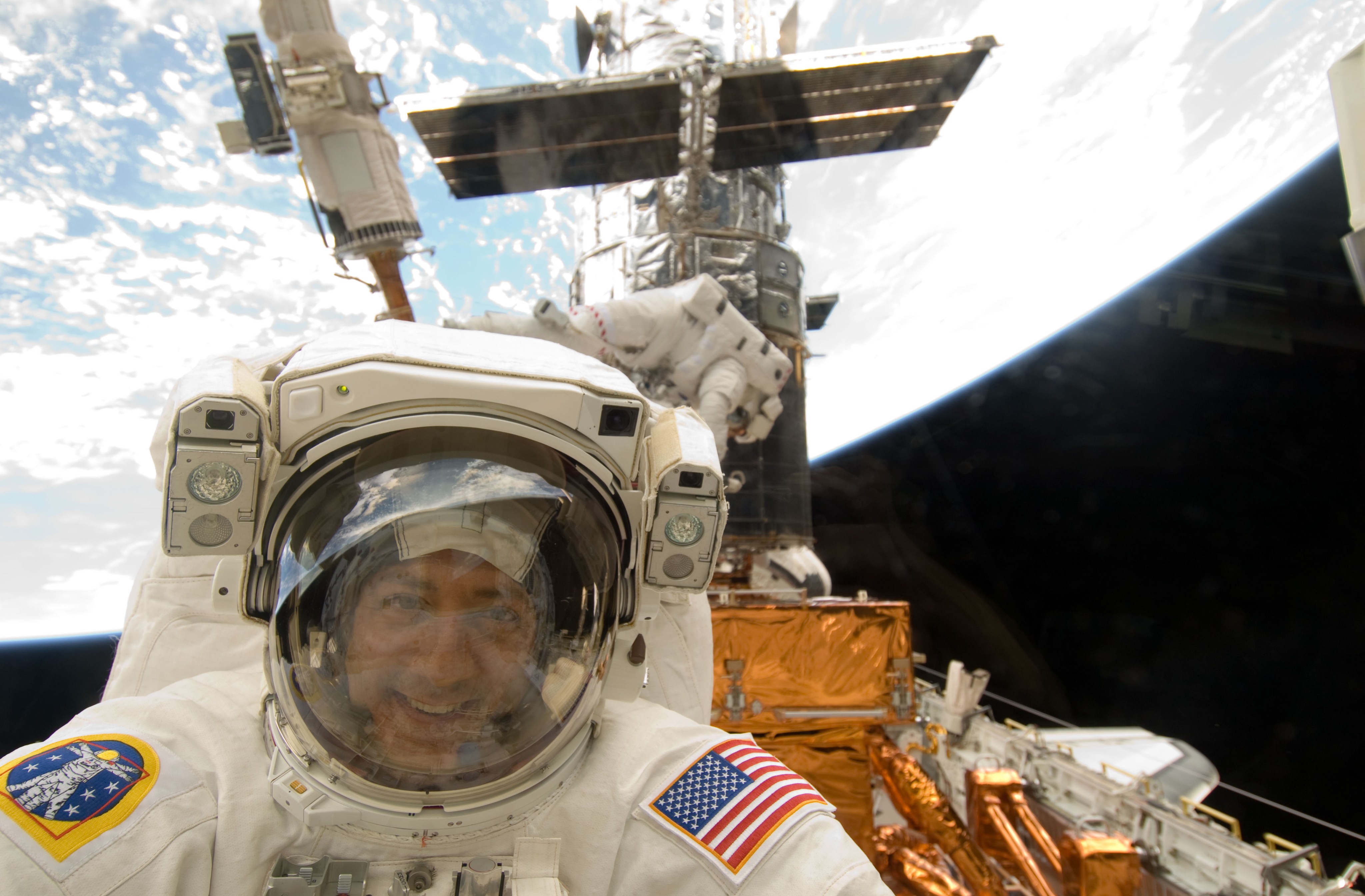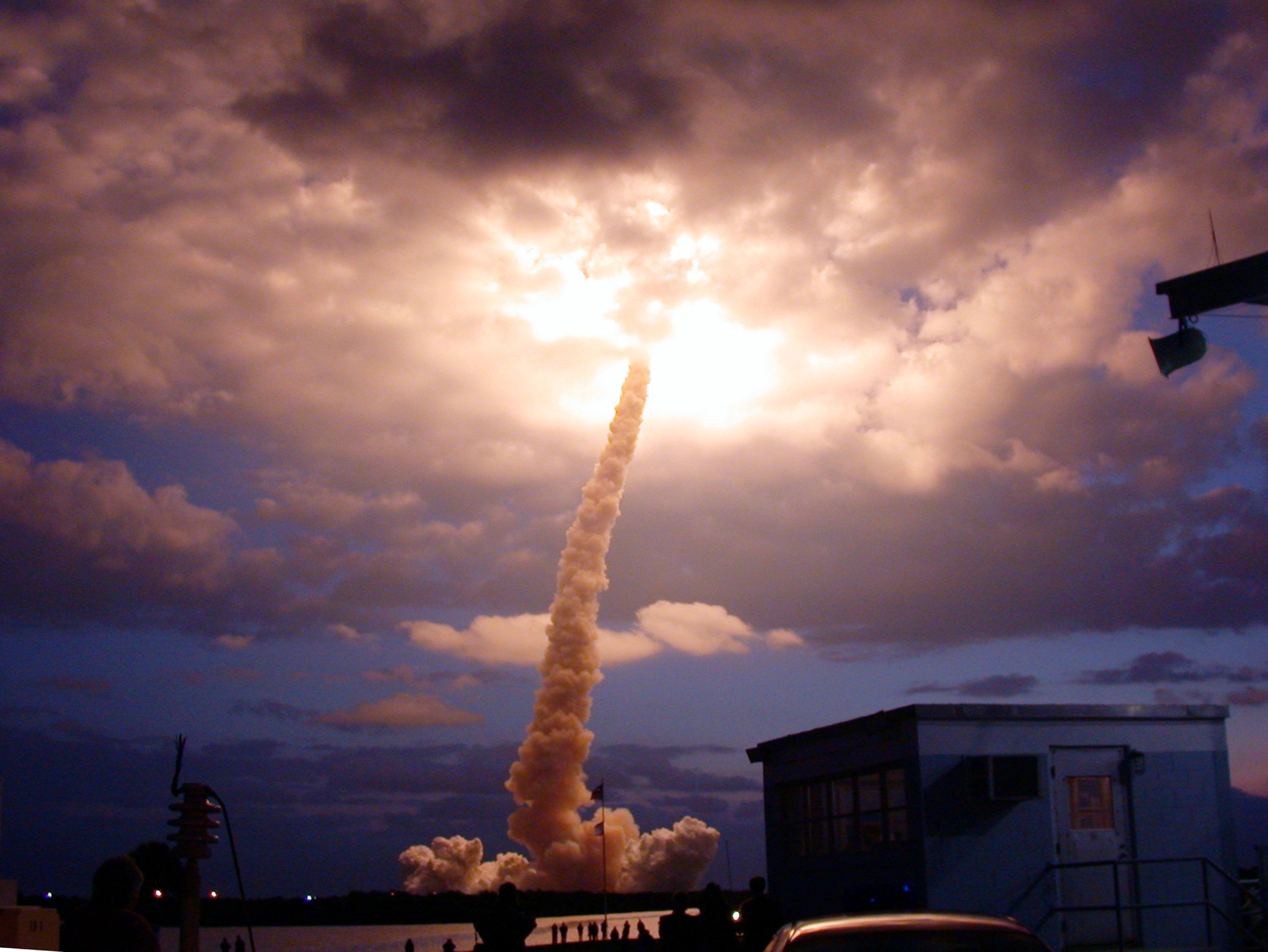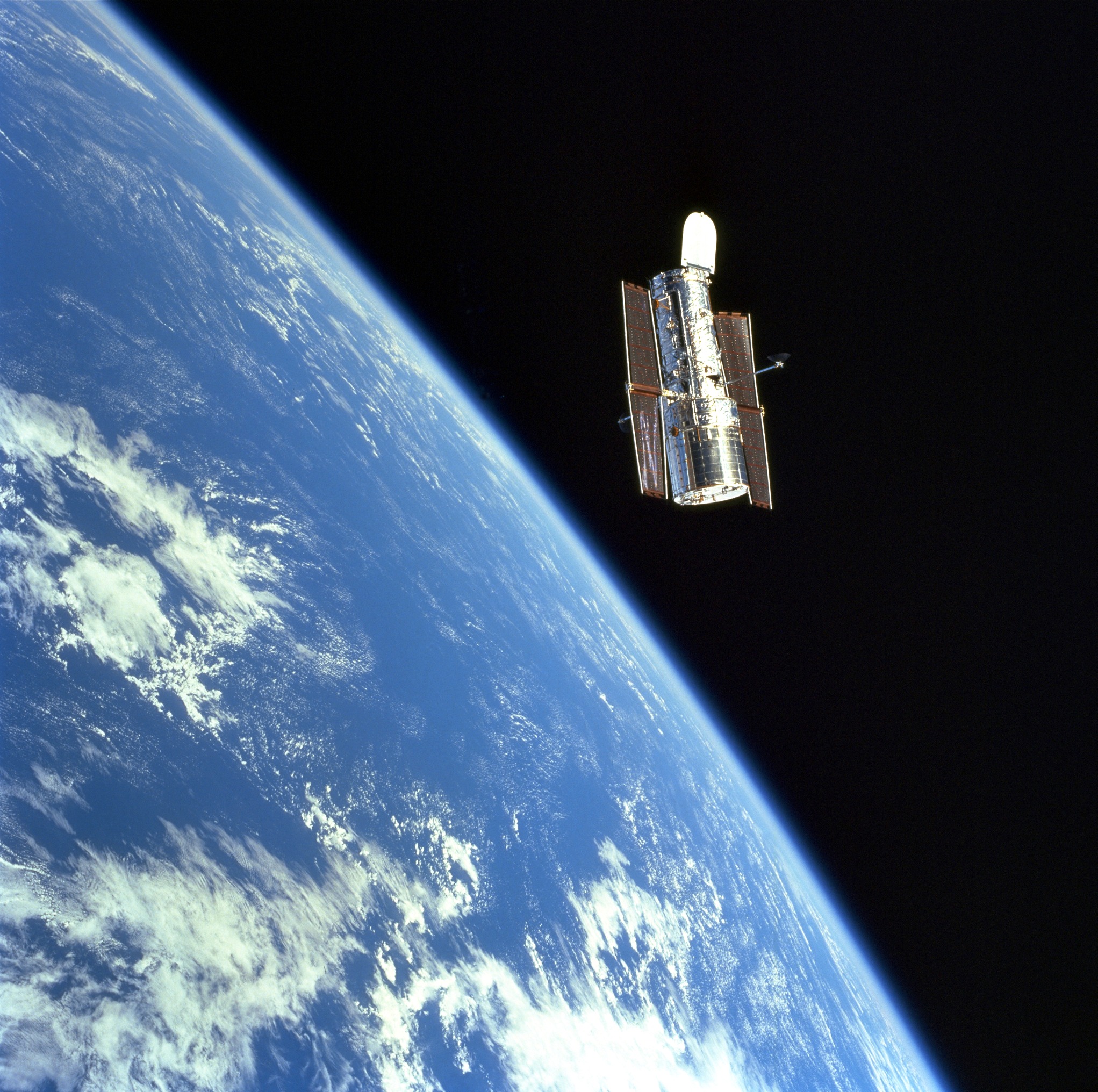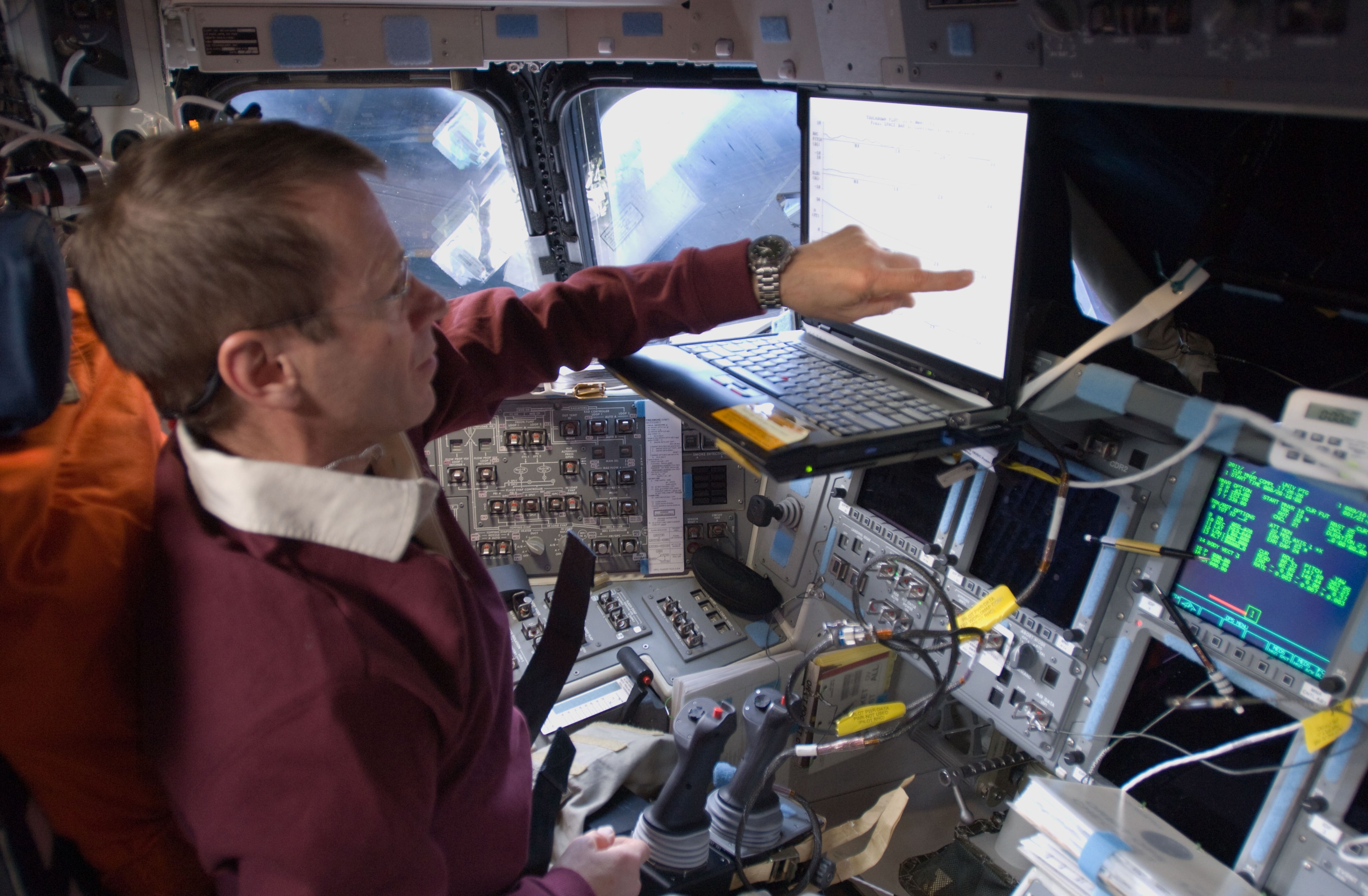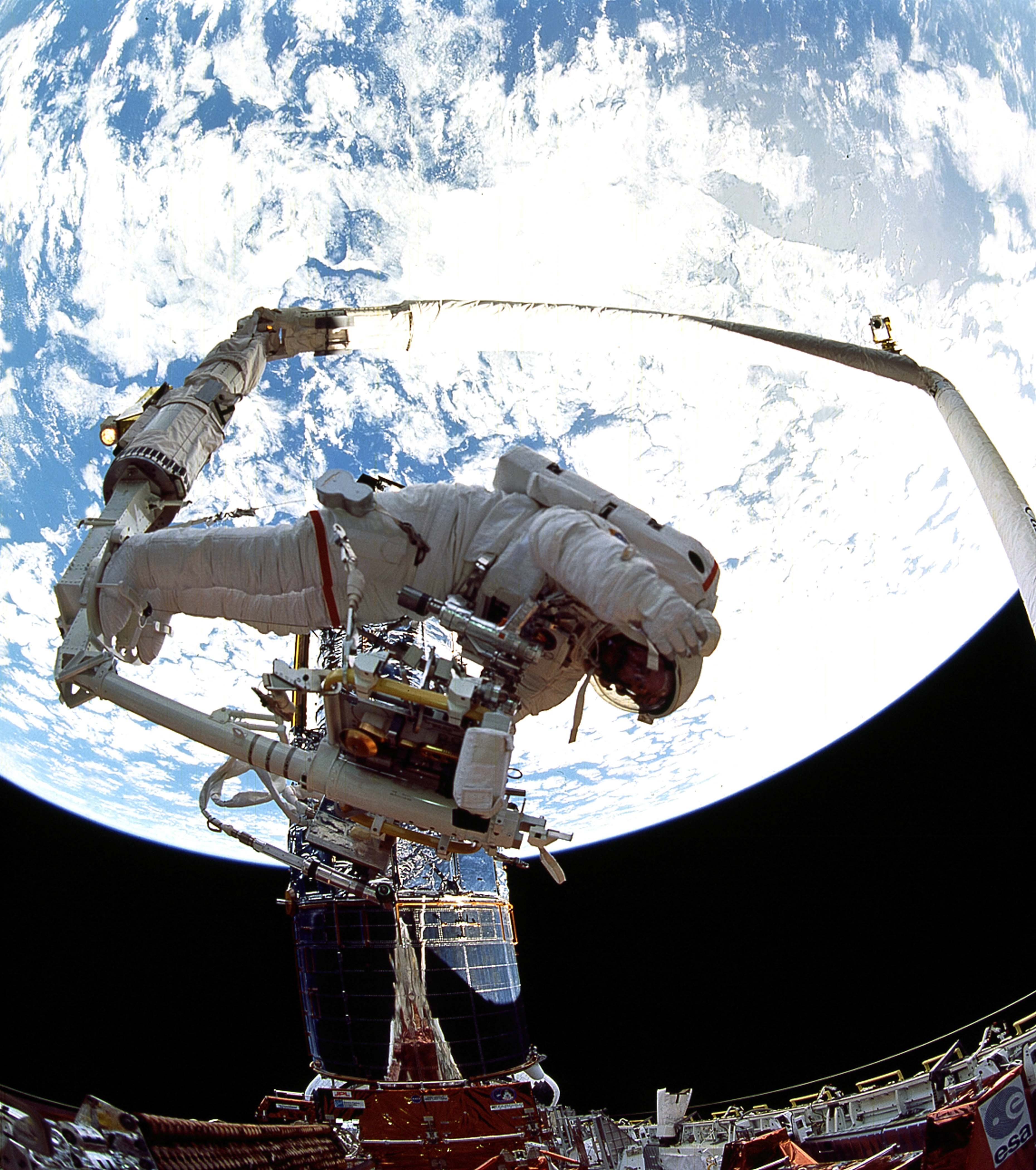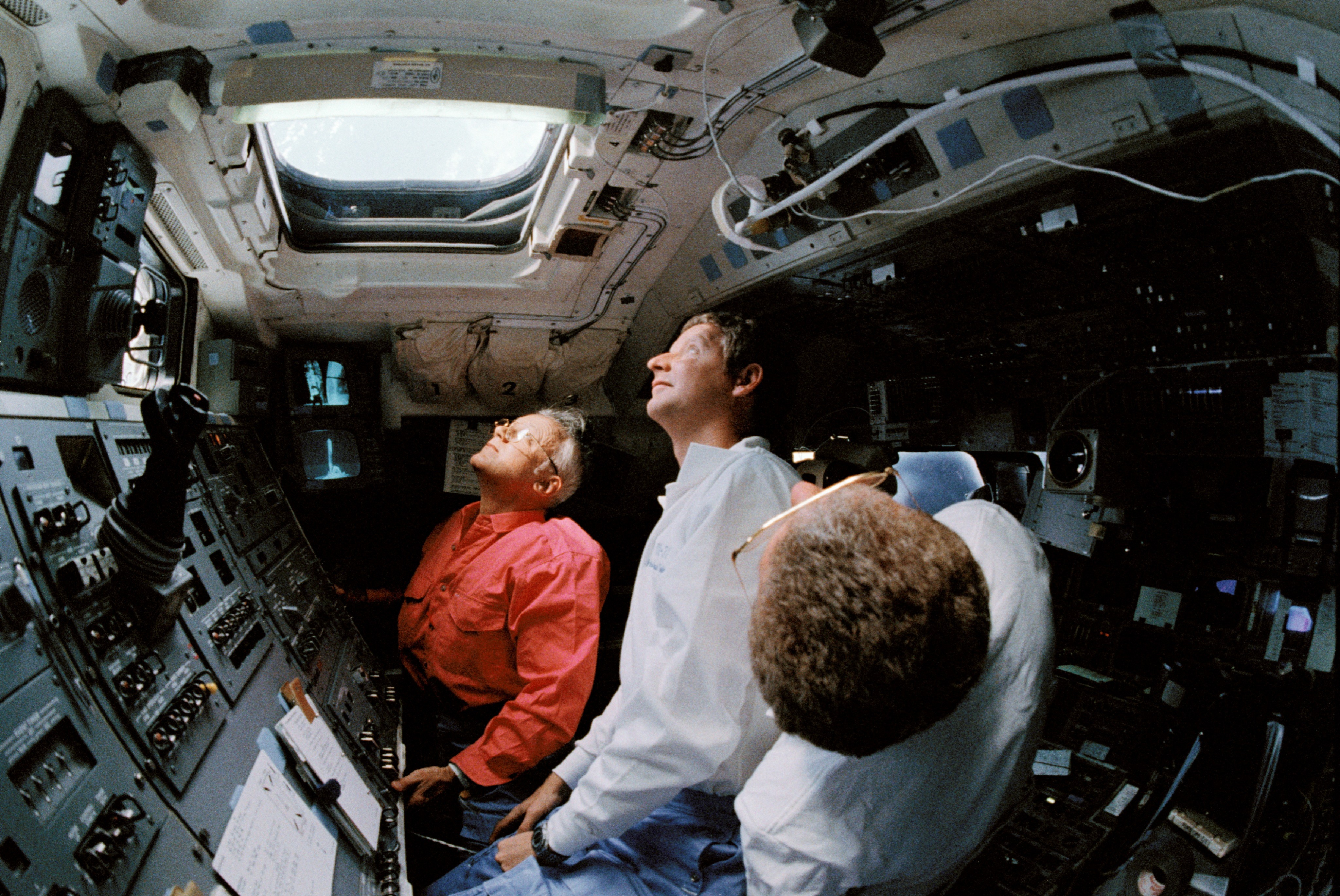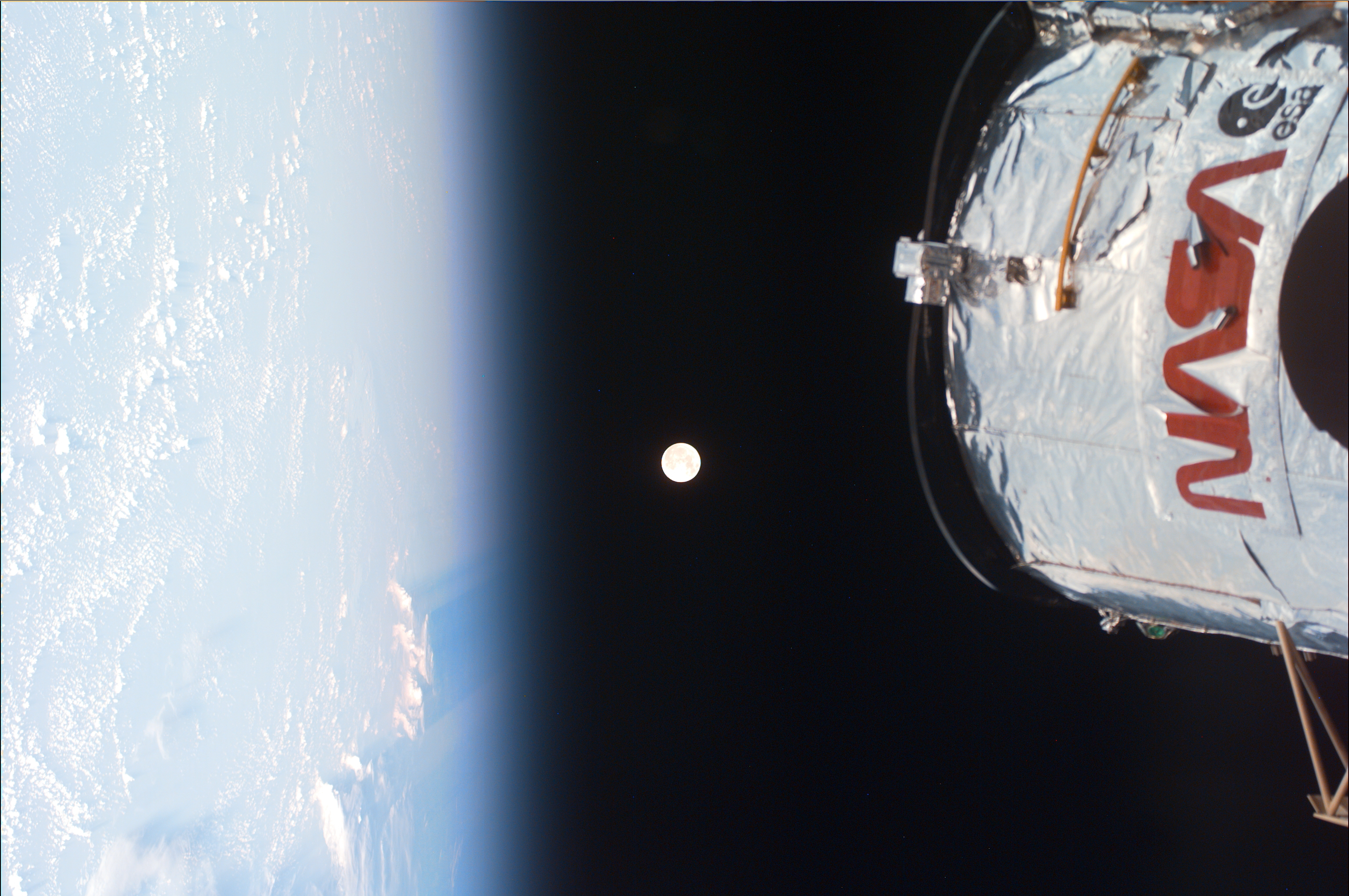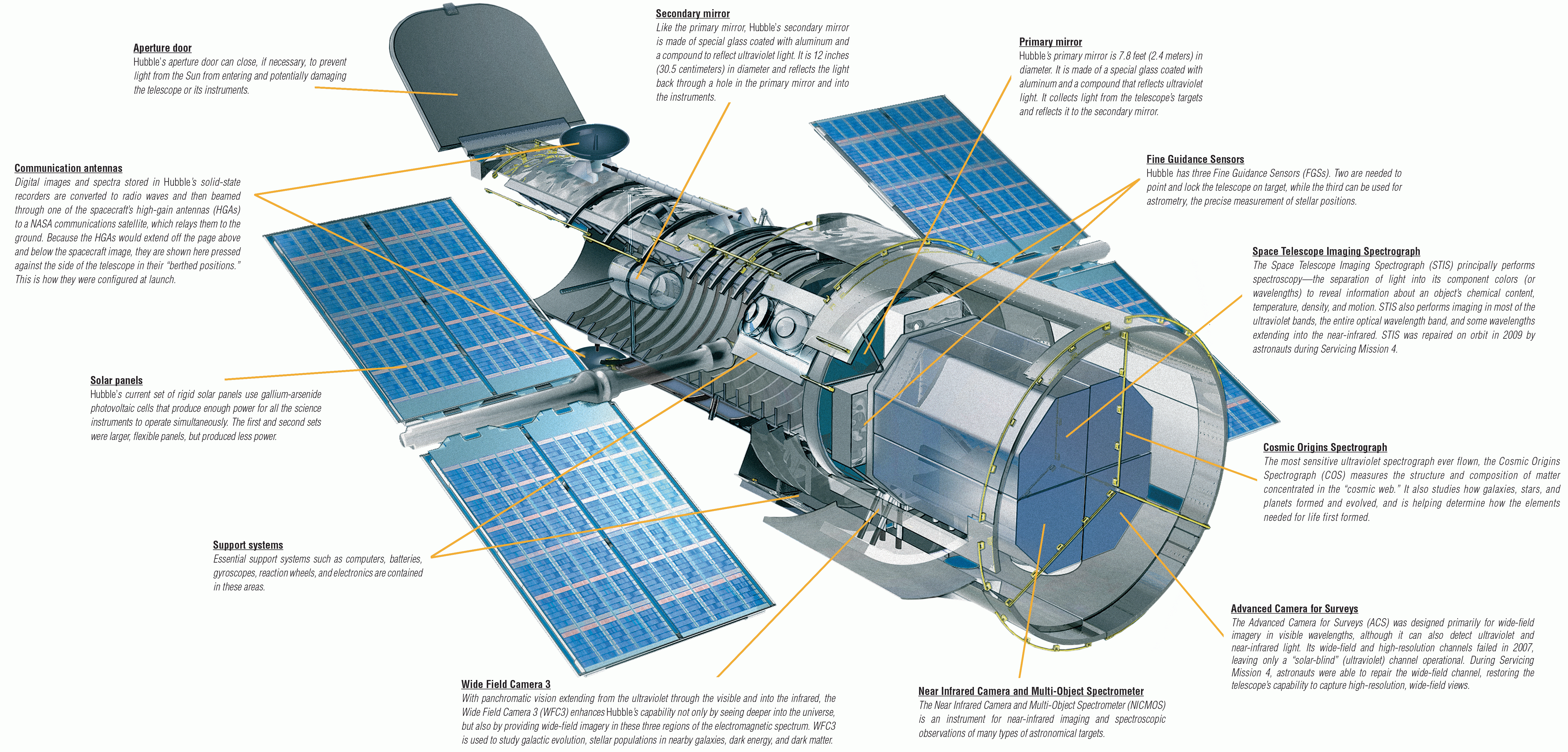Hubble pioneers
Introduction
Named in honor of the trailblazing astronomer Edwin Hubble, the Hubble Space Telescope is a large, space-based observatory that has changed our understanding of the cosmos since its launch and deployment by the space shuttle Discovery in 1990.
Hubble is not just a satellite. It’s a symbol of humanity’s quest for knowledge.
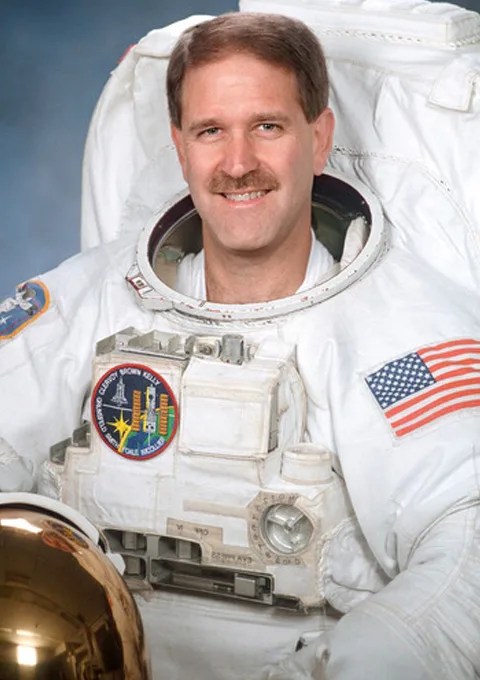
John Grunsfeld
Hubble servicing mission astronaut and astronomer
Hubble’s capabilities have grown immensely in its over 30 years of operation. This is because new, cutting-edge scientific instruments have been added to the telescope over the course of five astronaut servicing missions. By replacing and upgrading aging parts, these servicing missions have greatly extended the telescope’s lifetime.
Telescopes have a particular range of light that they can detect. Hubble’s domain extends from the ultraviolet through the visible (which our eyes see) and into the near-infrared. This range has allowed Hubble to deliver stunning images of stars, galaxies, and other astronomical objects that have inspired people around the world.
Hubble has made more than 1.6 million observations over the course of its lifetime. Over 21,000 peer-reviewed science papers have been published on its discoveries, and every current astronomy textbook includes contributions from the observatory. The telescope has tracked interstellar objects as they soared through our solar system, watched a comet collide with Jupiter, and discovered moons around Pluto. It has found dusty disks and stellar nurseries throughout the Milky Way that may one day become fully fledged planetary systems and studied the atmospheres of planets that orbit other stars. Hubble has peered back into our universe’s distant past, to locations more than 13.4 billion light-years from Earth, capturing galaxies merging, probing the supermassive black holes that lurk in their depths, and helping us better understand the history of the expanding universe.
In its over 30 years of operation, Hubble has made observations that have captured humanity’s imaginations and deepened our knowledge of the cosmos. It will continue to do so for years to come.
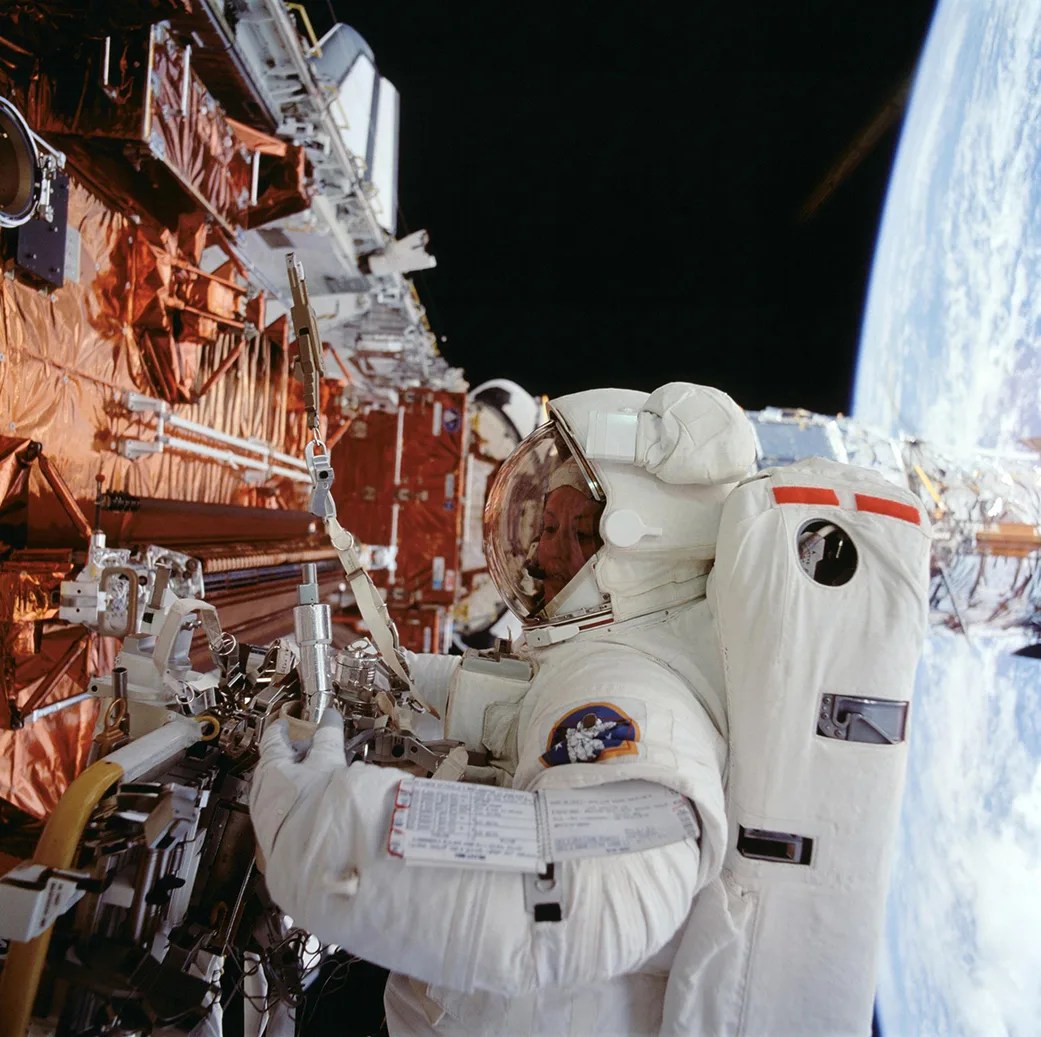
Facts
The facts and figures of the Hubble Space Telescope paint a picture of the telescope in orbit and provide a glimpse of the engineering prowess behind the observatory.
To see a more comprehensive list of Hubble facts, visit our Hubble by the Numbers page.
Size
Length | 43.5 feet (13.2 m) |
Weight (at launch) | about 24,000 pounds (10,800 kg) |
Weight (post-SM4) | about 27,000 pounds (12,200 kg) |
Diameter (at widest point) | 14 feet (4.3 m) |
Spaceflight Statistics
Low-Earth Orbit | altitude of 320 miles (278 nautical miles, or 515 km), inclined 28.5 degrees to the equator |
Time to Complete One Orbit | about 95 minutes |
Speed | about 17,000 mph (27,000 kph) |
Optical Capabilities
Sensitivity to Light | ultraviolet through infrared (115–2500 nanometers) |
Hubble's Mirrors
Primary Mirror Diameter | 94.5 inches (2.4 m) |
Primary Mirror Weight | 1,825 pounds (828 kg) |
Composition | Ultra-Low Expansion Glass |
Reflective Coating | 4 millionths (0.000004) of an inch (0.1 μm) of aluminum under 1-millionth (0.000001) of an inch (0.025 μm) of magnesium fluoride |
Secondary Mirror Diameter | 12.2 inches (0.3 m) |
Secondary Mirror Weight | 27.4 pounds (12.4 kg) |
Pointing Control
Actuators | Based upon information from the sensors, Hubble's actuators physically adjust the telescope's position and orientation. They consist of four reaction wheels and four magnetic torquer bars. |
Sensors | Six gyroscopes, five Sun sensors, two magnetometers, three fixed-head star trackers, three fine guidance sensors |
Accuracy | In order to take images of distant, faint objects, Hubble must be extremely steady and accurate. The telescope is able to lock onto a target without deviating more than 7 thousandths (0.007) of an arcsecond, equivalent to shining a laser on a human hair one mile away |
Energy Source | the Sun |
Mechanism | two 8 x 24.75-foot (2.44 x 7.54-meter) gallium-arsenide solar panels |
Power Generation (in sunlight) | about 5,500 watts |
Power Storage
Batteries | six nickel-hydrogen (NiH) |
Storage Capacity | equal to about 22 average car batteries |
This 360-degree video tour of the Hubble Space Telescope in orbit highlights the location and purpose of the telescope's instruments, mirrors, and other major components.
Credits: Eric Anderson and Benjamin Gavares (Northrop Grumman Space Systems); Scott Wiessinger (USRA)
Current Instruments
- Advanced Camera for Surveys (ACS)
ACS is a third-generation imaging camera. This camera is optimized to perform surveys or broad imaging campaigns. - Cosmic Origins Spectrograph (COS)
COS focuses exclusively on ultraviolet (UV) light and is the most sensitive ultraviolet spectrograph ever, increasing Hubble's sensitivity at least 10 times in the UV spectrum and up to 70 times when looking at extremely faint objects. It is best at observing points of light, like stars and quasars. - Space Telescope Imaging Spectrograph (STIS)
STIS is a second-generation imager/spectrograph. STIS is used to obtain high-resolution spectra of resolved objects and has the special ability to simultaneously obtain spectra from many different points along a target. - Wide Field Camera 3 (WFC3)
Wide Field Camera 3 is the main imager on the telescope. It has a camera that records visible and ultraviolet (UV) wavelengths of light and is 35 times more sensitive in the UV wavelengths than its predecessor, Wide Field and Planetary Camera 2. A second camera that is built to view infrared (IR) light increases Hubble's IR resolution from 65,000 to 1 million pixels. Its combination of field-of-view, sensitivity and low detector improves 15-20 times over Hubble's previous IR camera. - Fine Guidance Sensor (FGS)
The FGS provides pointing information for the spacecraft by locking onto guide stars. The FGS can also function as a scientific instrument by precisely measuring the relative positions of stars, detecting rapid changes in a star’s brightness, and resolving double-star systems that appear as point sources even to Hubble’s cameras. Hubble has three FGSs. - Near Infrared Camera and Multi-Object Spectrometer (NICMOS)
NICMOS has the ability to obtain images and spectroscopic observations of astronomical targets at near-infrared wavelengths. Although NICMOS is currently inactive, most of its functionality is replaced by Hubble’s other science instruments.
Servicing Missions
Hubble was designed to be repaired and upgraded in orbit by spacewalking astronauts. Space shuttle crews made five trips to Hubble, keeping the telescope in top condition and at the cutting edge of scientific technology.
Hubble Space Shuttle Missions
Timeline
Hubble's history is littered with firsts, scientific discoveries, failures, and triumphs. Explore Hubble milestones, missions, discoveries, and more.

